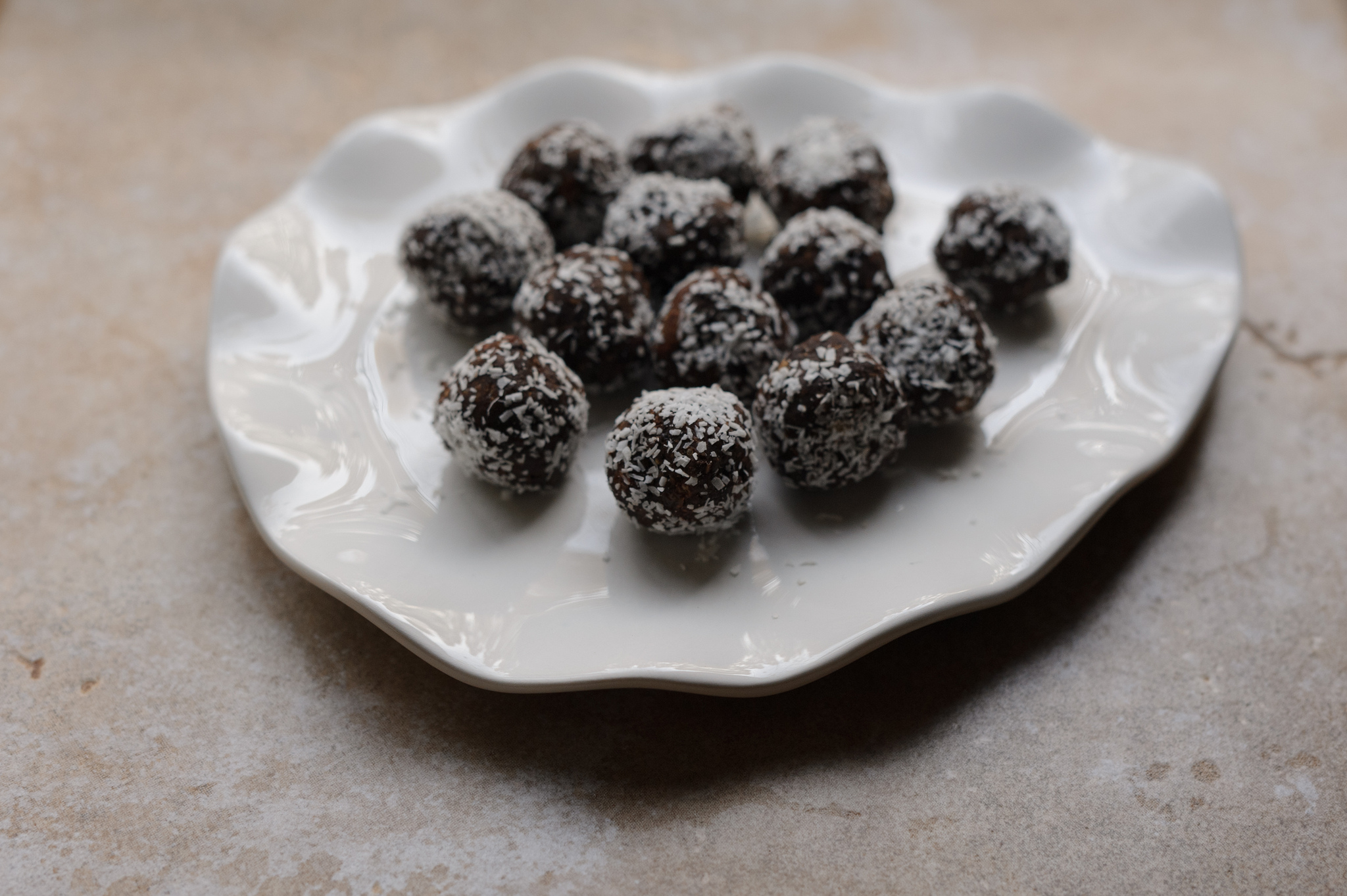An Honest Kitchen "Makeovers"
 Wednesday, June 12, 2013
Wednesday, June 12, 2013 Today on the dietitian's side of Green & Berries I'm pleased to feature a guest post by Kathyrn Elliott and Lucinda Dodds who have just released issue #6 of An Honest Kitchen, their beautiful, appetizing and intelligent digital publication about cooking, eating and enjoying "real food that's good for you."
................................................................................................................................................................................................................................................................
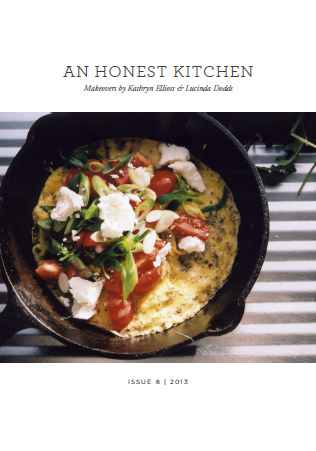
Kathryn and I (Lucy) were challenged by a reader to makeover some classic recipes, to give the An Honest Kitchen treatment to some favourite family meals, we jumped at the opportunity. What a fun idea, one with a practical and healthy outcome.
We researched what types of meals people turned to most often and what we discovered was that a lot of recipes, particularly traditional ones, required a pathetic amount of vegetables. We knew straight away that many could do with a makeover right there. If you're going to eat five portions of vegetables per day, the minimum required for good health, then dinner will probably – for most of us - need to contain at least three. That's not going to happen if a recipe asks for one carrot and half an onion between four people.
We also discovered that cutting back on the amount of oil you cook with, and on the cream and cheese while you’re at it, works a treat, with no compromise on flavour if you use other flavouring tools. Plus, keeping a good sense of what the proportions of your plate should look like by following our 50/25/25 rule (see below) keeps everyone happy and healthy.
Here are some of our thoughts on how to makeover any recipe you already love:
Double the vegetables.
Simply to double (or triple) the quantity of the vegetables given in any recipe. (Although you don't need to do this with ours!)
It's easier to add extra vegetables to your meal if you chose those which take a similar amount of time to cook. Pay attention to whether the recipe you want to makeover uses relatively quick cooking vegetables (e.g. zucchini, snow peas and spinach) or ones which take longer (e.g. carrots, pumpkin (winter squash), beetroot and onions).
Canned tomatoes and frozen peas count! Adding these can be a convenient way to get more vegetables into soups and stews particularly.
A half or whole bunch of chopped spinach or other greenery right at the end of the cooking works almost every time.
If in doubt, add a big green salad. One handful of salad is roughly equal to one vegetable portion.
Cut back on the oil you use
We find almost everything can be cooked in one or two tablespoons of olive oil.
Keep some measuring spoons by the stove as pouring by eye alone can be wildly inaccurate.
Start the cooking off at a slightly lower temperature than normal when using less oil, and stir more regularly at the beginning to prevent food sticking or browning too quickly.
Cut back on or replace the cheese and cream
If a favourite recipe uses cream you can use either natural yoghurt or yoghurt that has been whisked together with some ricotta in its place. If you're using just yoghurt, stir this through at the end, right before serving, to prevent it from splitting.
Reduce the overall quantity of cheese used, and make it a strong tasting cheese like vintage cheddar, feta or parmesan to boost flavour.
Instead of cream and/or cheese to lift a meal, try mustard, fresh herbs, sundried tomatoes, shoyu, chilli or citrus. Any of these can help the flavours to hum beautifully.
Change the portions on your plate
Make vegetables about half of the bulk of each meal.
There's no need to go “carb free”, but aim to make the grain or potato portion of your meal about ¼ of the bulk on your plate. Cook less of these foods and replace some of them with vegetables.
Think about whether you need to reduce your portion of protein containing foods like meat, chicken, fish, eggs and tofu. Aim for a piece of meat or chicken the size and thickness of your palm, or a piece of fish the size of your hand. As a general rule, make the protein portion of your meal about ¼ of the bulk on your plate.
A good rule is the 50/25/25 rule, a simple guideline to what your dinner plate should look like - 50% vegetable, 25% protein and 25% cereal (or potato).
So. What does a Makeover recipe look like? I’m glad you asked.
Macaroni & Cauliflower Cheesy Bake
Our inspiration for this was, of course, the traditional macaroni cheese. For our Makeover version we've added in plenty of vegetables; cauliflower and frozen spinach, plus some red lentils which are cooked in with the pasta. You’ll be getting at least three portions of vegetable per serve. By making a lighter sauce based on yoghurt, ricotta the calorie/kilojoule is drastically reduced. Easier, healthier and still delicious. Makes 4 serves
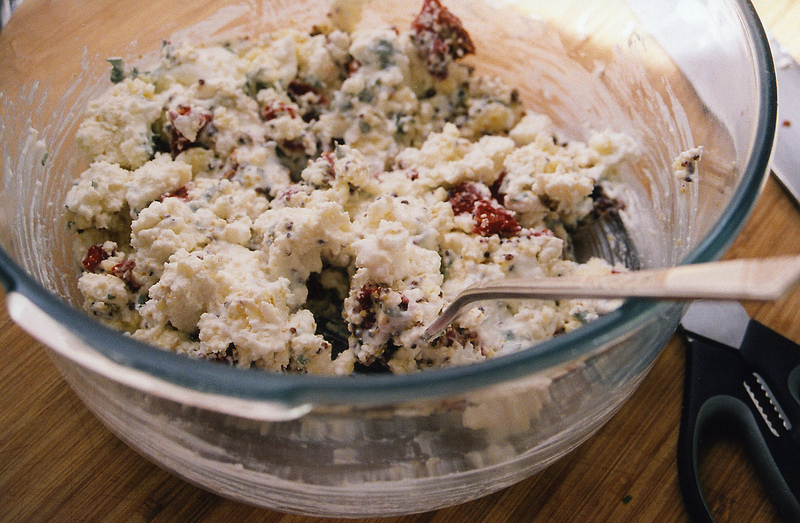
1 small - medium head of cauliflower, about 800g (a generous 1 ½ lbs)
180g (6 ½ oz) macaroni
¼ cup red lentils
90g (3 ¼ oz) frozen spinach
10-ish sprigs of fresh thyme
6 pieces sundried tomato
70g (2 ½ oz) strong tasting Cheddar
½ cup natural yoghurt
150g (5 ¼ oz) fresh ricotta
1 tablespoon wholegrain or Dijon mustard
1 slice wholegrain bread
1 tablespoon parmesan
1 large handful of mixed leaves per person
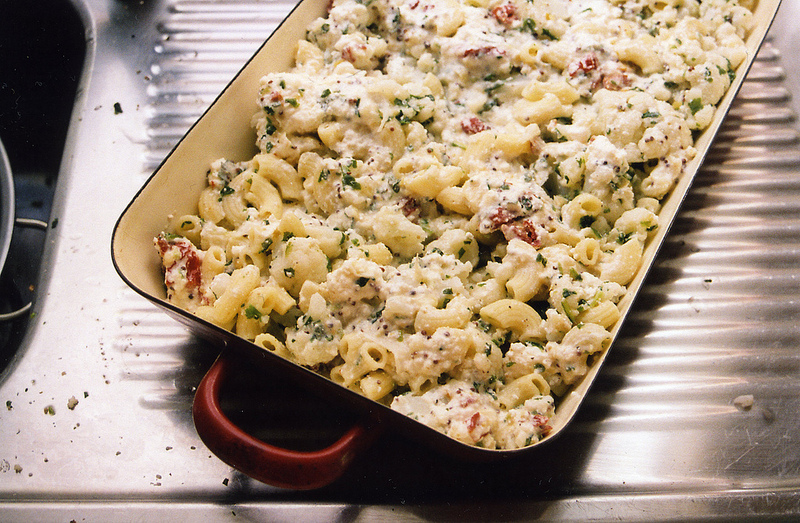
Preheat the oven to 220°C (430°F).
Chop the cauliflower & cook the pasta: Bring a large saucepan of water to the boil. While you are waiting for the water, very roughly chop the cauliflower. Once the water is boiling add the macaroni and red lentils. Cook for about 4 minutes and then add the cauliflower and frozen spinach. Continue cooking until the pasta is al dente and the cauliflower is soft. Drain, making sure you reserve some of the cooking water.
While the pasta is cooking, make the cheese sauce: Remove the thyme leaves from the stalk and place these in a large bowl. Roughly chop the sundried tomatoes and grate the Cheddar. Add these to the thyme, together with the yoghurt, ricotta and mustard. Mix well. Once the macaroni and vegetables are cooked, pour these into the cheese sauce. Add ¼ cup of the reserved cooking liquid. Season with lots of black pepper and then gently fold together, so the ingredients are well combined. Don't worry if it looks a bit sloppy at this stage.
Make the crunchy topping: Place the wholegrain bread and parmesan on a chopping board and run a knife through, chopping until the mixture resembles very rough breadcrumbs.
Bake the pasta: Tip the pasta and cauliflower into a baking dish. Scatter the bread and parmesan mixture over the top. Place in the oven and cook for 15 - 20 minutes, until the topping is golden brown.
To serve: Place a large handful of salad leaves on each plate and then serve with the Macaroni and Cauliflower Bake.
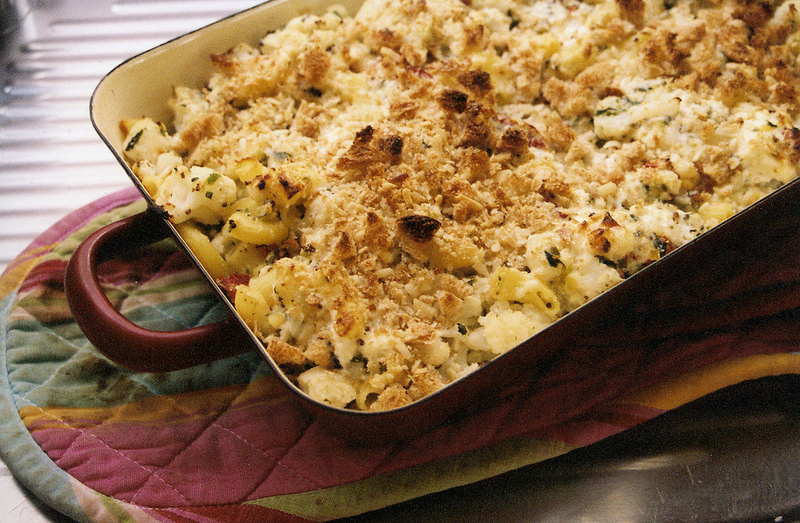
For more ideas on making over the meals you love take a look at our publication An Honest Kitchen: Makeovers.
An Honest Kitchen is a regular publication all about real food that's good for you. Each issue is full of simple recipes, practical cooking information and healthy eating advice. Our latest edition, Makeovers, in which we revamp popular meals is available in e-format from 11 June.
(All photographs above by Lucinda Dodds)
................................................................................................................................................................................................................................................................
Giveaway: I (Elaine) wholeheartedly agree with Kathryn's and Lucy's healthy eating philosophy and appreciate their great ideas for making over recipes to enhance health without compromising flavour. As a dietitian, I want to help promote their work. So I will be purchasing a copy of An Honest Kitchen, Makeovers (Issue #6) to give away to a lucky Greens & Berries reader. To enter, comment on this post. You can simply say "count me in" but feel free to share your favourite tip (Kathryn's and Lucy's or you own) for making over a favourite family recipe. The contest will run until the end of June July 15th when I will draw a random number & award the prize to the corresponding comment number. Good luck and good eating to all!



